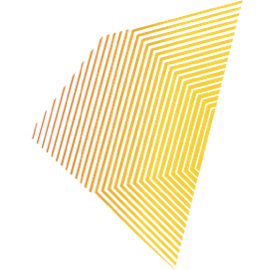
Measuring and mitigating citizens' feelings of insecurity
Insights into subjective safety in urban space.


The Problem
Citizens may be deterred from using certain public facilities or engaging in certain socially desirable activities due a range of perceptions and/or assumptions that can be collectively termed 'feelings of unsafety'.

Such perceptions may be caused by a range of personal, social and/or environmental factors — many of which may not relate to crime or policing.
Since the establishment of the LKA's Competence Centre of Urban Security (KURBAS), it's mandate has been to address security in both new and existing urban areas. While the main prevention role of the LKA is to prevent opportunities that enable crime, the LKA also works to strengthen citizens’ feelings of security.
However, the police cannot address all factors impacting citizens' feelings of unsafety. Other stakeholders must also take action — working independently or with the police — to address factors influencing citizens' feelings of unsafety that fall outside the domain of policing.
To develop sustainable solutions that address issues arising from citizen insecurity, a structured methodology for understanding the relevant contexts, situations, stakeholders and roles is required. This methodology should generate practical, human-centred insight that can inform the development of meaningful solutions for specific contexts at a detailed level.
The Tool
INSIGHT supports a process through which to gain insight into security aspects of
a public space and evaluate the subjective safety of the citizens using it.
The INSIGHT manual is a fabricated card container
that holds the five method cards, a spiral-bound collection of blank forms for use with the 'Walk around your hood' methodology, and a pen.
INSIGHT provides a practical Tool
for measuring subjective safety, understanding crime opportunity structures, and enabling collaboration between relevant stakeholders.
Tool Components
The INSIGHT manual, outlining the process and containing the other components
A promotional brochure, providing an overview of the INSIGHT Tool.

End-users
The INSIGHT Tool is designed for use by LKA / police researchers and those responsible for addressing citizens' feelings of unsafety, including:
Local police
District managers
Crime prevention councils
Municipalities
Urban planners
Neighbourhood managers
Housing companies
The Tool was developed by the LKA in Lower Saxony in collaboration with police officers, crime prevention experts, social workers and local citizens.
Timeline


Research undertaken
The LKA considers the behavioural and emotional aspects of feelings of insecurity, as well as the environmental factors that influence these. The Tool was informed by a critical review of the scientific evidence-base and the development of theoretical concepts and practical use scenarios.
In addition, the following research activities were undertaken:

Research into the safety issues impacting the various use scenarios
Observational research within the urban area of interest, including taking photos and videos and conducting a walk-through
Research into the production of small-scale police incident reports on crime and incivilities for an area of interest
Research into the production of easy-to-read, comprehensive maps of an area of interest
Consultation with a social worker dealing with older people in the CCI use scenario area
Two scenarios were selected for use in the DesignLab. Using a structured creative process based on the CCI Feelings of Unsafety Lifecycle, ideas were generated for tackling feelings of insecurity related to the two scenarios. The results were analysed and concept directions identified.
Tool demonstration
Based on CCI scenario research, the Sahlkamp-Mitte area and the tram station 'Alte Heide' were selected for INSIGHT Tool demonstration. The aim was to apply the Tool to investigate why feelings of insecurity were deterring older adult residents from using the tram station.

Implementation
Tool implementation activities during the CCI project
Tool implementation activities planned for the future
Sources
Boers, K. (1991) Kriminalitätsfurcht. Über den Entstehungszusammenhang und die Folgen eines sozialen Problems. Hamburger Studien zur Kriminologie. Centaurus, Herbolzheim.
Landeskriminalamt Niedersachsen (2020) Sicherheit und Vielfalt im Quartier – DIVERCITY Erfassung baulich-räumlicher Merkmale, Reflexion und Implikationen. Hannover.
Pfeiffer, H. (2020) "Der Weg kriminalpräventiver Inhalte in städtebauliche Entscheidungen – Kriminalpolitische, kriminologische und rechtliche Aspekte.: In: Schriftenreihe des Landeskriminalamts Niedersachsens (ed) Sicherheit in Wohnumfeld und Nachbarschaft aus interdisziplinärer Sicht. Beiträge zur Sicherheitsforschung. Hannover, p 47–80.
Querbach, M.; Schröder, A. & Verhovnik-Heinze, M. (2020) "Sicherheit, Kriminalität und Raum. Ein grundlagenorientierter Überblick aus kriminologisch-, raum- und sozialwissenschaftlicher Perspektive". In: Schriftenreihe des Landeskriminalamts Niedersachsens (ed) Sicherheit in Wohnumfeld und Nachbarschaft aus interdisziplinärer Sicht. Beiträge zur Sicherheitsforschung. Hannover, p 5-41.
Rebe, S.; Schröder, A. (2020) Sicherheit und Vielfalt im Quartier – DIVERCITY. Die Polizei als Träger öffentlicher Belange in Städtebau und Architektur. Forschungsbericht. https://www.div-city.de/wp-content/uploads/2021/05/Die-Polizei-als-Traeger-oeffentlicher-Belange.pdf. Accessed 1 Oct 2021.
Schröder, A. (2020) “Raumbezogene Kriminalität als Analyseinstrument zur Untersuchung der Sicherheit in Wohnumfeld und Nachbarschaft”. In: Schriftenreihe des Landeskriminalamts Niedersachsens (ed) Sicherheit in Wohnumfeld und Nachbarschaft aus interdisziplinärer Sicht. Beiträge zur Sicherheitsforschung. Hannover, p 373-394.


Policy Implications
There are a range of methods for understanding the local safety context — crime statistics, convictions, arrests and, potentially, data collected through public surveys.

There exist practical methods for measuring victimisation (e.g. the International Crime Victimisation Survey). However, assessing people’s perceptions of security is more difficult.
Tools and resources to understand the citizen perspective should be used by key stakeholders (including police, housing companies, municipalities and planners) to improve the planning, design and management of the urban environment.
Engaging citizens in mapping their lived experience of feelings of insecurity is a valuable method to help key stakeholders understand the citizen perspective and gain insight into the perceptions of particular groups, including: young people; older people; and minorities.
Acknowledgements
Dr. Anke Schröder
Melanie Schlüter
Maximilian Querbach
Maurice Illi